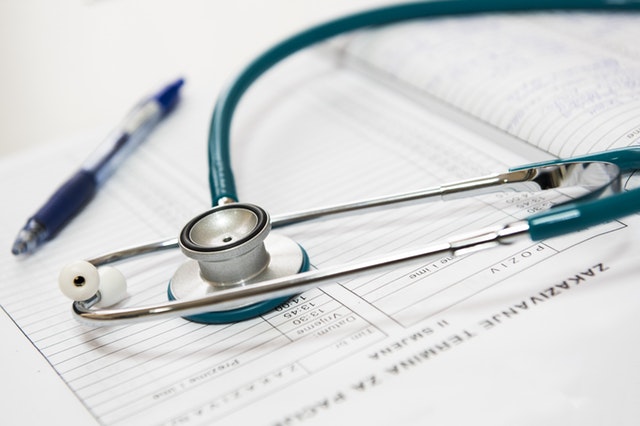Preparing for Doctor’s Visit

Purpose of Consult a doctor or doctor visit are following :-
- To identify and diagnose about the signs and symptoms of your complaints
- To get a medical treatment of the diagnosis
- To regular follow up
Papers to Carry
Medical History Card
Make sure you always bring along a record of your key information, including medical conditions, dates of past surgeries, current medications, doctors’ names and contact information, next of kin and contact information, health insurance and any drug allergies.
Changes to Your Medical Record
If you’ve received any new test results since your last visit, bring them with you, even if you believe your doctor has already seen a report. Having this information on hand at your appointment ensures that you’ll remember to discuss it with your physician. This is particularly important if you are seeing a new doctor or specialist.
Your Prescription Drugs
Before you leave home, gather all your medications and put them in a zip-lock bag. Tell your doctor if you’ve stopped taking any prescribed drugs or haven’t followed dosage instructions. Be honest: If you mislead doctors about prescription compliance, they may assume your medications are not working and prescribe even more.
Journal of Your Symptoms
If your visit is related to a new concern, you should be keeping a journal that documents your discomfort and how it has affected your daily life in the days or weeks since it began. If your appointment is focused on a chronic condition, your doctor may have asked you to keep track of your response to new at-home treatments; to record objective measures, like your blood sugar; or to note subjective perceptions, like the intensity of a recurring headache. Whatever the information, bringing the journal to your appointment can help your doctor better understand what has been going on.
List of Questions
List of Questions You should expect your physicians to be responsive to your concerns, but you need to do your part as well. Always come to an appointment with a list of questions prepared in advance. Brainstorm your questions well before your visit, then note down a concise list, arranged in order from most to least urgent. And don’t leave your doctor’s office without asking them.
Notebook and Pen
This may seem obvious, but it’s important to take notes throughout an office visit. If your doctor mentions an unfamiliar term, get him to spell it out. Don’t hesitate to push for clarifications. At the end of every visit, request a verbal summary and write it down. Before you leave the exam room, review what you’ve written about your treatment plan; if there’s anything you don’t fully understand, ask again.
Friend or Family Member
Having someone with you can provide crucial moral support. But it’s also a valuable means of ensuring that your doctor addresses your most important questions. A friend or relative may not be able to sit in during the physical exam, but he or she should be welcome when you and your doctor discuss diagnosis, testing or treatment. That’s when a companion can remind you of your primary questions and concerns.
Your Smartphone
There is always some downtime during an office visit. It’s also useful to have your phone on hand if it carries your calendar so you can schedule follow-up visits and screenings.
Snacks
Snacks so you can maintain your energy and mood.
Filing tips/ maintaining medical records
The first step in organizing your personal medical record is to collect hard (physical) copies of as much information about your treatments and diagnoses as you can from all your caregivers, including physicians, nurse practitioners, physiotherapists, psychologists, etc. Keep in mind that federal law requires all doctors and medical facilities to allow you access to your medical records.
- Remember to be polite and patient when asking to access your medical files. Tell them it’s to establish your own personal records. Some doctors and medical facilities might be hesitant to allow you access due to fear of malpractice litigation.
- Your caregiver may need some time to organize your medical information because it may not all be in a single file. Schedule an appointment to come back if that’s the case.
- Keep in mind that a personal medical record combines all the medical information collected by each caregiver/medical facility that you’ve been to into a single file that’s easily accessed.
- While law gives you the right to access most of your Patient Health Information (medical records, imaging, test results, billing records, etc.), some types of information are exempted. For example, you do not have a right to access psychotherapy notes (i.e., notes taken by a mental health professional during a counseling session) or documents compiled for use in a civil or criminal proceeding like medico legal cases.
Copy all the documents in your medical files. Once you’ve notified the caregiver of your intentions and they’ve organized your medical information, it’s time to make copies of it all. Your personal medical record should include copies of all test/lab results, diagnoses, treatment reports, radiology reports, progress notes insurance statements and referrals from each caregiver/medical facility you’ve visited. Don’t expect the actual caregiver to copy your file for you. Likely their support staff will be the ones to do the actual copying.
- Although you own your medical information, you don’t own the actual paper, files and x-rays that your info is on, so don’t expect to walk out with the originals. You’re only entitled to copies from the originals.
- Your caregiver/medical facility has the legal right to charge you a copying fee, so ask how much it might cost. They may charge per page or a flat fee for the copying service and it may vary according to the hospitals.
- You’ll likely need to sign a release form at every facility that you request records from.
To read more on Patient Care, click on the link below.
Content Courtesy : Portea



